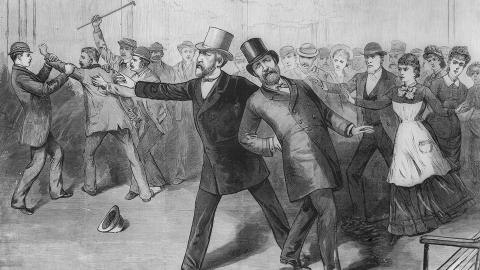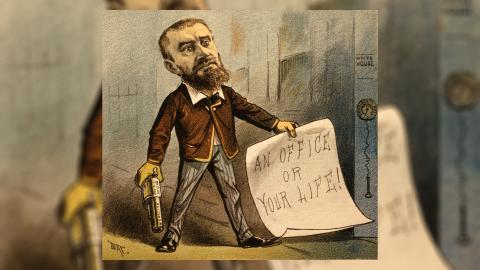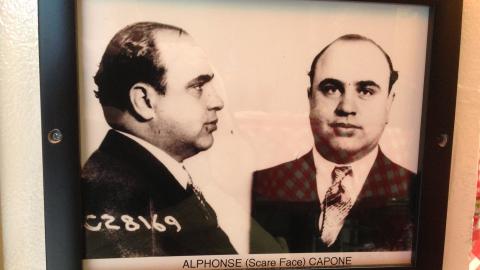What if America had won the Vietnam War?
On 30 April 1975, North Vietnamese tanks rolled into Saigon, the capital of South Vietnam, took the city and hoisted the People's Army of Vietnam (PAVN) flag over the South Vietnamese presidential palace. The Vietnam War was officially over and back home in America the effects of the conflict would be felt for decades to come.
The war, which claimed over 58,000 American lives, left the nation divided. It had caused deep social unrest and it’s been argued it sowed the seeds of the country’s present polarisation. The scars from the war have shaped American politics ever since and subsequently helped to mould the geopolitical landscape of today’s world.
But what if the war had ended differently? What if the United States had achieved the goal of helping the South Vietnamese win its civil war against the North? How might history have played out afterwards? Let’s take a look.
U.S. and South Vietnamese forces achieve outright military victory
The Vietnam War was the first major war to be televised and the horrific images that were beamed back to living rooms across America made the war feel more real. The media coverage of the war fuelled the protest movement and eventually, the public outcry against the war became so significant that the government could no longer justify its role in Vietnam.
The exact point at which the American public began to turn on the war was after the North Vietnamese Tet offensive of 1968. Although the offensive, which consisted of a number of surprise attacks across South Vietnam, was a crushing military defeat for the North, it turned out to be a huge political victory for them. Up to that point, Americans were being told they were winning the war and the North were being defeated. The ambitious Tet offensive shocked the U.S. public and support for the war declined soon afterwards.
For an American military victory to have occurred it would have needed to of happened before public opinion began to turn. Therefore, let’s imagine that after the U.S. forces repelled the Tet offensive attacks they hammered home their advantage and seized the initiative to finally defeat the North. The media back home no longer portrays Tet as a shocking example of how the war was ‘unwinnable’ but in fact, declares it the reason they won.
With the North now defeated, the country is reunited under South Vietnamese rule and is therefore heavily influenced by America. However, China is right on the northern border of Vietnam and it's unlikely they will sit back and do nothing. The worst-case scenario sees China acting as it did during the Korean War of the early 50s and intervening to push American forces back. Given the heightened tension of the Cold War by the time of 1968, it’s likely that such a direct act by China and/or the USSR might have slipped the world back into another world war, the outcome of which would require an entirely separate jaunt into alternative history.
Looking at the best-case scenario, China and the USSR accept the result of the war but they continue to provide heavy support to rebellious communist forces continuing the fight long after the war has ended. This means the U.S. has to station a number of troops in North Vietnam for an extended period of time, costing the superpower a great deal in money and resources.
The Ho Chi Minh trail, the supply route used by Northern forces to get into the South, continues to provide Northern insurgents with a way of infiltrating the South and causing disruption. The popularity of communism amongst the rural villages of the North and South, coupled with the fact that many Vietnamese view the Americans as an invading force - just like the French before them - means that the U.S. faces an uphill battle to capture the hearts and minds of the local population.
At this point, the country could go one of two ways. Either the financial drain and insecurity of Vietnam causes the U.S. to pull out earlier than expected, leaving the communists to seize power again - just like in our timeline albeit a few years later - or the U.S. pours massive amounts of resources into quelling rebellions, shutting down the Ho Chi Minh trail and implementing a more thorough ‘Vietnamization’ policy. For argument's sake, let’s go down the route of the latter and say that somehow America does manage to win over the will of the people.
With Vietnam now united and free of violent disruption, the now fledgeling capitalist country can set about nurturing its democratic roots. The failed economic policies of the communist government from 1976-1985 no longer occur in this altered timeline, meaning the severe poverty and starvation seen during those years is prevented. The 1975 U.S. trade embargo on Vietnam also doesn’t occur. Instead, money floods into the country via foreign investment and trade allowing the economy to grow and flourish.
Corruption, which was rife within the South Vietnamese government during the war, will likely rear its ugly head again; the amount by which it damages the prospects of this new united Vietnam is hard to guess.
The Cambodian genocide carried out by the Khmer Rouge regime under the leadership of Pol Pot would not occu'
What is for sure though is that a number of acts carried out by the communists after the actual war no longer happen. In our timeline, up to 300,000 South Vietnamese people were sent to re-education camps where they faced torture, abuse and all too often death. Between 1975-1980 the communists also displaced around 750,000 to over 1 million South Vietnamese from their homes and forcibly relocated them to uninhabited mountainous-forested areas under the ‘New Economic Zones program’.
Conditions in these zones were poor. Up to 2 million Vietnamese people, known as the ‘boat people’, also fled their country by boat or ship and it’s estimated that somewhere between 200,000-400,000 of them died at sea. None of these events would occur in the altered timeline.
Historians have also argued that the Cambodian genocide carried out by the Khmer Rouge regime under the leadership of Pol Pot would not occur if the Vietnam War had ended in 1968. The genocide caused the deaths of up to 1.8 million Cambodians, somewhere between 21-24% of its population at the time. If America and South Vietnam end the war in 1968, there will be no military incursions into Cambodia. In our timeline, those incursions laid the foundations for the rise of the Khmer Rouge, without them there would be no genocide.
It’s also likely that with a military victory in Vietnam, America retains its confidence to interfere with force around the world to prevent the spread of communism. This means it continues to rely on its military to solve problems during the 70s and 80s. This is the exact opposite of what happened in our timeline where the U.S. refrained from using force abroad during these years.
This bolder and more aggressive foreign policy leads America into more conflicts across the globe. This emboldened attitude will likely bring the Cold War to a quicker end, although U.S.–Chinese relations will take a nosedive with America’s increased presence in Southeast Asia, further redefining the geopolitical landscape of our modern world.
A U.S. victory in ’68 also means there is no 60s-anti-war movement. Likely then there is no hippie counterculture, or certainly not one as big as it was, which means less acceptance of religious, cultural and sexual diversity in our modern society. All of those have been attributed to the legacy of the hippie movement, along with protest music.
The 60s take on a completely different political vibe back home in America. Without the political scars of the Vietnam War the nation is less divided, has more trust in its government and in the long run perhaps less susceptible to the divisive and populist policies of Donald Trump.
The U.S. continues to support South Vietnam beyond 1975
If not by outright military victory, it’s been argued that another way in which the U.S. might have secured a ‘win’ for South Vietnam was by continuing to provide it support beyond 1975. In our timeline Saigon fell to the North mainly due to the fact that the U.S. Congress refused to appropriate additional military assistance for South Vietnam, citing strong opposition to the war by the American public.
So let’s imagine that America actually keeps its promises to the South and continues to support it long enough for it to retain its independence. A proper ‘Vietnamization’ process along with a long-term defence program allows South Vietnam to develop a strong economy, a more popular permanent government and a robust military force that is able to defend itself. With its strong ties to the U.S., the now capitalist country can develop democracy and become almost like South Korea is today.
Although the Korean model offers a neat and tidy ‘pre-made’ example of what could happen to South Vietnam, the likelihood of it following suit is rather slim.
Where a stalemate was an accepted result in Korea, both North and South Vietnam want reunification, therefore a divide is never going to last. The North will strike again and without an outright U.S. military victory the Ho Chi Minh trail remains open. The resources required by the U.S. to continue defending the South become too great as the government struggles to keep justifying its role against growing opposition at home. The communist Khmer Rouge regime also comes to power in Cambodia since military incursions are not prevented in this altered timeline.
So even if America had continued to support the South it’s debatable whether it would have stayed the course long enough to leave the country capable of retaining its independence, meaning the South would eventually fall to the communists just like in our timeline, just a few years later.
















